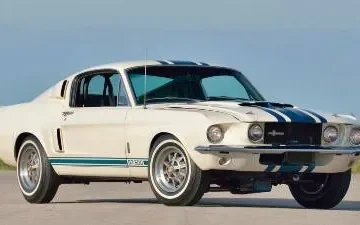The 1970 Plymouth Superbird was designed for NASCAR dominance. Its aerodynamic nosecone, large rear spoiler, and powerful big-block engines made it a racing icon and a rare gem in muscle car history.
Key Takeaway:
The 1970 Plymouth Superbird wasn’t just a muscle car—it was a purpose-built NASCAR weapon that combined radical aerodynamics, big-block V8 power, and motorsports dominance. Though it was banned after a single season, its legendary legacy, extreme rarity, and impact on racing and emissions policy cement it as one of the most significant vehicles in American automotive history.
Contents
Born For Speed: The Origin Of A Racing Icon
In an era when Detroit was obsessed with horsepower, the 1970 Plymouth Superbird pushed muscle car engineering to a new frontier. Created specifically to dominate NASCAR’s high-speed oval tracks, the Superbird was more than just an eye-catching oddity—it was a motorsport weapon, honed by wind tunnel science and racing ambition.
Built as a homologation special to satisfy NASCAR’s production requirements, just 2,783 Superbirds were manufactured for public sale. Each car had to be street-legal, despite being fundamentally engineered to slice through the air at over 200 mph. This car was Plymouth’s calculated answer to the Dodge Charger Daytona, and it arrived with the singular mission of bringing legendary driver Richard Petty back into the Mopar fold after his defection to Ford.

Aerodynamic Excellence: Why The Superbird Looked Like A Rocket
What made the 1970 Superbird so instantly recognizable—and controversial—was its radical aerodynamic design. Its pointed nosecone and towering rear wing weren’t just stylistic choices. The 19-inch rear spoiler, higher than the car’s roofline, was the result of extensive testing at the Lockheed Martin wind tunnel, and it delivered crucial downforce at high speeds.
These features contributed to a drag coefficient of 0.31, unprecedented for the time. To put that in perspective, it was more aerodynamically efficient than many cars built decades later. The low drag and high-speed stability allowed the Superbird to push boundaries on the track, helping drivers clock speeds over 200 mph—a barrier broken by Buddy Baker in its sister car, the Dodge Daytona.
Dominating NASCAR—Then Getting Banned
The Superbird’s debut during the 1970 NASCAR Grand National Series was nothing short of dominant. With its superior aerodynamics and big-block V8 powertrains, it logged 18 victories that season—an impressive feat considering the fierce competition from Ford, Chevrolet, Mercury, and Pontiac.
However, its dominance came at a price. NASCAR, concerned with the rising costs of engineering “aero warriors” and their disproportionate speed advantages, imposed new rules that effectively banned the Superbird and Daytona from competition. The new restrictions limited engine displacement for cars with extreme aerodynamic aids, making the Superbird obsolete after just one season.
Rare, Raw, And Revered: Why The Superbird Is A Collector’s Dream
Muscle car collectors often talk about rarity, but few models rival the Superbird’s production scarcity. With just 2,783 units produced, and even fewer surviving in original condition, it remains one of the most elusive and valuable muscle cars ever made.
Adding to its exclusivity were its three available engines:
– 440 Magnum V8 (375 hp)
– 440 Six Barrel V8 (390 hp)
– 426 HEMI V8 (425 hp, NASCAR-spec)
The 426 HEMI Superbirds are the rarest, with only 135 built, making them grail cars for collectors. The combination of NASCAR history, limited production, and outrageous design makes the Superbird a cornerstone of any serious muscle car collection.

The Cartoon Bird That Could: Branding Meets Performance
The Superbird was more than a mechanical marvel—it had personality. Inspired by Warner Bros.’ Road Runner, it came complete with a “Beep Beep” horn and cartoon decals. The Superbird’s quirky charm contrasted its aggressive engineering, making it an instant standout both on the street and track.
This marketing genius helped connect the car to younger buyers, solidifying Plymouth’s image as the boldest muscle brand of the era. The Road Runner branding wasn’t just for laughs—it created an emotional bond that few muscle cars could replicate.
Unsung Hero Of Emissions History
Strangely enough, the 1970 Superbird also played a surprising role in U.S. emissions regulation history. In 1972, the Environmental Protection Agency (EPA) used a Superbird to conduct emissions tests over 10,000 miles. The data gathered contributed to new federal standards, leading to the widespread adoption of catalytic converters and a significant drop in muscle car horsepower throughout the 1970s.
Though unintentional, the Superbird became a symbol not just of peak muscle car performance, but also the beginning of the end for the golden era of high-horsepower street machines.

Superbird vs. Daytona: Battle Of The Aero Titans
Although often lumped together, the Plymouth Superbird and Dodge Charger Daytona had key differences. While the Daytona debuted in 1969 with a slightly sleeker profile and lower drag coefficient (0.29 vs. 0.31), the Superbird ultimately achieved more wins during its brief NASCAR stint.
Additionally, the Superbird had a more exaggerated rear wing, a longer nosecone, and different fender scoops. While the Daytona came first, the Superbird refined the formula—and is now often seen as the ultimate evolution of Mopar’s aero muscle movement.
Why The Superbird Still Matters Today
More than five decades after its debut, the 1970 Plymouth Superbird remains a powerful symbol of American automotive ambition. Its story combines NASCAR innovation, federal regulation, brand loyalty, and raw mechanical power into a single, unforgettable chapter in car history. With auction values routinely exceeding $500,000, and HEMI models reaching even higher, the Superbird isn’t just a car—it’s a legend on wheels.

Conclusion : The Muscle Car That Couldn’t Be Tamed
The 1970 Plymouth Superbird’s impact goes far beyond its race wins and horsepower figures. It challenged the boundaries of what was possible in production car design. It forced NASCAR to rewrite its rulebook. It helped shape EPA emissions policies. And through all of that, it stayed true to its radical roots. Today, the Superbird isn’t just remembered as a car that went too far—it’s celebrated because it dared to go that far in the first place.
How Can You Identify The Significance Of The 1970 Plymouth Superbird?
The 1970 Plymouth Superbird is significant due to its distinctive design featuring a large spoiler and nosecone, its limited production of only 2,783 units, and its impressive NASCAR success, winning 18 races in one season. It wasn’t just built for the track — it was a symbol of American ingenuity and dominance during the golden era of speed. To see how the Superbird helped define an entire movement, explore how muscle cars evolved.

Frequently Asked Questions (FAQs)
1. Why was the 1970 Plymouth Superbird banned from NASCAR?
The 1970 Superbird was banned due to its aerodynamic advantages, which made it too fast for NASCAR regulations. New rules in 1971 limited engine size for aero cars, effectively ending its eligibility.
2. How many 1970 Plymouth Superbirds were made?
Plymouth built just 2,783 Superbirds in 1970 to meet NASCAR’s homologation requirements, making it one of the rarest muscle cars ever produced.
3. What engine options were available in the 1970 Superbird?
The Superbird offered three engines: the 440 Super Commando (375 hp), the 440 Six Barrel (390 hp), and the legendary 426 HEMI (425 hp).
4. What’s the difference between the Plymouth Superbird and the Dodge Charger Daytona?
Though similar in purpose, the Superbird had a longer nosecone, taller rear wing, and more wins in NASCAR. The Daytona came first, but the Superbird refined the aerodynamic design.
5. How much is a 1970 Plymouth Superbird worth today?
Values vary by engine and condition, but 440 cars can fetch over $300,000, while 426 HEMI Superbirds often sell for $500,000 or more at auction.
6. Is the 1970 Superbird street legal?
Yes, all Superbirds were built to be street legal, though they were heavily influenced by racing design and required specific production numbers to qualify for NASCAR.
7. Why does the Superbird have such a tall rear wing?
The 19-inch wing was designed to sit in clean airflow above the roofline, maximizing rear downforce at high NASCAR speeds. It was tested in Lockheed’s wind tunnel for optimal performance.
8. What makes the 426 HEMI Superbird so rare?
Only 135 Superbirds were equipped with the 426 HEMI, making it one of the most sought-after and valuable versions of the car.




0 Comments